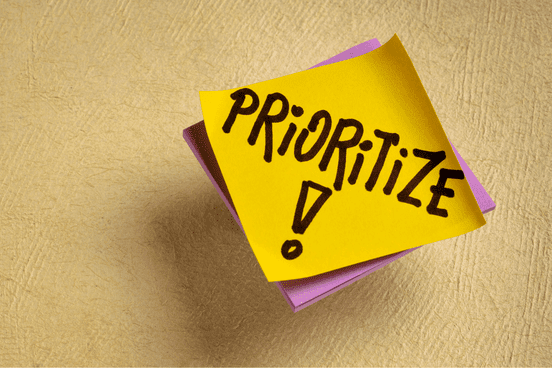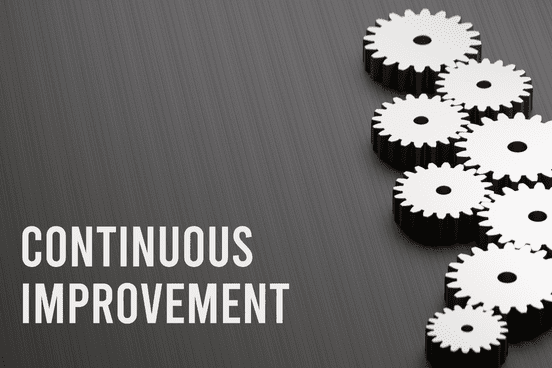Retrospectives produce minimal results when teams approach them as checkbox meetings instead of structured improvement sessions. After facilitating hundreds of retrospectives across product and engineering teams, the distinction between productive retrospectives and time-wasters comes down to process discipline, not team dynamics.
Every successful retrospective follows the same five-phase structure. These phases function like a building’s foundation. You can modify the specific techniques within each phase, but skip or rush any phase and the entire session loses effectiveness.
This guide details each phase with practical facilitation techniques, timing recommendations, and the mistakes that undermine even well-intentioned retrospectives. The framework draws from Esther Derby and Diana Larsen’s foundational work in “Agile Retrospectives: Making Good Teams Great,” which established the structure that agile teams worldwide now use.
The 5-Phase Retrospective Framework
These five phases create the structure for productive retrospectives. Eliminate one phase and you compromise the session’s value. Rush through them and you’ll surface only obvious observations.
Phase 1: Set the Stage

Time allocation: 2-5 minutes
Every retrospective begins by establishing psychological safety. This phase centers on Norman Kerth’s Retrospective Prime Directive from his book “Project Retrospectives: A Handbook for Team Review”:
“Regardless of what we discover, we understand and truly believe that everyone did the best job they could, given what they knew at the time, their skills and abilities, the resources available, and the situation at hand.”
This statement serves a function beyond ritual. When team members trust their intentions won’t be questioned, they discuss failures, mistakes, and uncomfortable realities. Without this foundation, retrospectives generate surface observations that avoid real issues.
What to do:
- Read the Prime Directive aloud or display it where everyone can see it
- Set working agreements such as maintaining confidentiality, one conversation at a time, and focusing on systems rather than individuals
- Run a brief check-in or icebreaker to help team members transition into retrospective mindset
- Explain the retrospective format for this session
Phase 2: Gather Data

Time allocation: 15-25 minutes
This phase collects objective information and subjective experiences from the Sprint. The goal is creating a shared understanding of actual events, not filtered memories or assumptions about what happened.
What to do:
- Use your chosen retrospective technique to collect observations, feelings, events, and metrics
- Encourage participation from everyone. Silent team members often hold the most valuable insights
- Capture facts and experiences without jumping to analysis
- Make everything visible on a board or digital tool
For teams where certain voices dominate, consider using structured facilitation techniques like silent writing or pairing to ensure everyone contributes.
Common pitfalls to avoid:
- Moving directly to solutions before understanding the situation
- Letting one or two people dominate the conversation
- Focusing exclusively on problems or exclusively on positives
Phase 3: Generate Insights

Time allocation: 10-20 minutes
The team makes sense of collected data. Patterns emerge, root causes surface, and shared understanding develops during this phase.
What to do:
- Identify patterns and themes in gathered data
- Group similar items together using affinity mapping
- Ask why questions to dig deeper
- Help the team connect seemingly unrelated observations
- Look for root causes rather than symptoms
Key questions to explore:
- What patterns do we see?
- What surprised us?
- What differed in this sprint compared to others?
- What falls within our control to change?
Phase 4: Decide What to Do

Time allocation: 10-15 minutes
Not every issue can or should be addressed. This phase focuses team energy where it creates the most impact through ruthless prioritization.
What to do:
- Use voting mechanisms like dot voting, Roman voting, or fist of five to identify top priorities
- Focus on items within the team’s circle of control or influence
- Discuss the top 2-4 items in depth
- Define specific action items with SMART criteria: Specific, Measurable, Achievable, Relevant, Time-bound
- Assign an owner to each action item
- Determine how you’ll track and follow up on these items
- Be realistic about capacity for change and avoid overcommitting
Remember:
- One meaningful improvement beats five half-hearted attempts
- Focus on systems and processes, not individuals
- Consider both quick wins and longer-term improvements
Effective action items include:
- What specifically will be done
- Who is responsible
- When it will be completed
- How success will be measured
Poor action item example: “We should communicate better.”
Good action item example: “Sarah will create a Slack channel for deployment notifications by Wednesday and share guidelines for what should be posted there. We’ll review usage at the next retro.”
Phase 5: Close the Retrospective

Time allocation: 5-10 minutes
The retrospective needs a deliberate ending. This phase ensures the team leaves with clarity about next steps and appreciation for the work done together.
What to do:
- Summarize the action items and commitments made
- Schedule when you’ll review progress, typically at the start of the next retrospective
- Close with appreciation or a positive note
- Consider using a closing activity like Appreciations or Return on Time Invested (ROTI)
A strong close creates momentum for implementation and reinforces that the time spent was valuable.
Facilitation Techniques That Improve Retrospectives

Understanding the five phases represents one challenge. Facilitating them effectively is another. These techniques separate adequate facilitators from skilled ones.
Timeboxing Creates Forward Momentum
The time allocations for each phase reflect what works for a standard 1.5 hour retrospective for a 2 week Sprint and teams of five to nine people.
Most teams spend excessive time gathering data and insufficient time on action items. Set a visible timer. When time expires for a phase, move forward even if the phase feels incomplete. You can circle back if necessary, but maintaining forward momentum matters more.
The exception: if the team is approaching a breakthrough insight during analysis, give it space. Make a conscious decision to extend time rather than letting it drift.
Draw Out Quiet Voices
The loudest person in the room rarely provides the most valuable insights. Your role as facilitator is creating space for everyone to contribute.
Techniques that work: silent brainstorming with sticky notes (physical or digital), round-robin sharing where each person speaks in turn, directly asking quiet team members for their perspective by saying something like “Alex, I haven’t heard from you yet. What’s your take?”
What doesn’t work: hoping quiet people will suddenly speak up or waiting for natural pauses in conversation.
Focus on Systems, Not People
When discussions turn personal, redirect to the system. If someone says “John always misses deadlines,” rephrase it: “It sounds like we’re seeing deadlines get missed. What’s preventing us from meeting our commitments?”
This approach isn’t about protecting feelings. It’s about reaching root causes. Personal blame stops inquiry. System thinking opens it up.
The Prime Directive helps here. Reference it when needed: “Remember, everyone did the best they could given what they knew. So what in our system made this difficult?”
Make Action Items Visible
Action items documented only in meeting notes rarely get completed. Put them somewhere visible: on your team board, in your project management tool, in a dedicated Slack channel.
Start every retrospective by reviewing action items from the previous session. This creates accountability and demonstrates that retrospectives drive actual change.
If action items consistently don’t get completed, treat that as data. Discuss it in the retrospective. Either the items aren’t actually important, or something blocks follow-through.
Know When to Dig Deeper
When someone mentions a problem, resist immediately jumping to solutions. Ask why at least three times.
Example: “We had too many bugs this sprint.” Why? “Because we rushed testing.” Why did we rush testing? “Because the feature arrived late to QA.” Why was it late? “Because requirements changed midway through.” Now you’re reaching useful root causes.
The first answer is rarely the actual root cause.
Why Retrospectives Fail and How to Fix Them

Even teams that understand the five-phase framework fail when they fall into these traps.
Using the Same Format Every Time
Using identical retrospective formats sprint after sprint kills engagement like eating the same meal every day kills appetite.
Rotate formats to maintain freshness. Different formats surface different insights and keep teams mentally engaged. Try various retrospective techniques like Plus/Delta, Start/Stop/Continue, Sailboat, Mad Sad Glad, or Timeline retrospectives. Derby and Larsen’s book provides dozens of specific activities for each phase that you can mix and match based on your team’s needs.
Lacking Psychological Safety
When team members don’t feel safe being honest, retrospectives generate polite platitudes instead of real insights.
Building psychological safety takes time. Start with less threatening topics. Acknowledge difficult truths when they surface. Never punish honesty, even when it creates discomfort.
Watch for signs of low safety: everyone agreeing too quickly, vague generalizations instead of specific examples, silence when you ask for concerns. These symptoms indicate teams protecting themselves.
Creating Too Many Action Items
Walking away with seven action items feels productive. Most teams can realistically complete one or two meaningful improvements per sprint.
Prioritize ruthlessly. Actually implementing one thing beats creating a list of good intentions that never materializes.
Failing to Follow Through
This represents the biggest failure mode. Teams have productive discussions, identify clear action items, then do nothing.
Make action items visible. Assign clear owners. Review them at the start of the next retrospective. If your team consistently doesn’t follow through, stop having retrospectives until you fix that problem. Pretending to improve is worse than not trying.
The retrospective isn’t the goal. Better sprints are the goal. If retrospectives aren’t producing better sprints, something is broken.
Imposing Improvements from Outside the Team
When managers or external stakeholders dictate action items instead of letting the team generate their own insights and solutions, retrospectives become performative exercises.
The team goes through the motions of gathering data and discussing problems, but the actual decisions come from outside the room. This destroys ownership and engagement.
Teams implement improvements they created. They comply with improvements handed to them. The difference shows up in execution quality and sustained change.
Your role as facilitator or manager is to guide the process, not to pre-determine the outcomes. If you already know what the team should fix, you don’t need a retrospective. You need a different conversation.
Skipping Retrospectives
“We’re too busy this sprint” or “Nothing much happened, let’s skip it” are dangerous rationalizations.
Retrospectives create the most value when you’re busy or when things feel routine. The busy sprint is exactly when you need to examine your process. The routine sprint is when small improvements compound.
If you don’t have time for retrospectives, you definitely don’t have time to keep making the same mistakes.
Adapting the Framework to Your Context

The five-phase framework remains consistent, but you need to adapt it to your specific context.
Adjustments for Team Size
Small teams of three to four people can move faster through phases. Consider 45-minute retrospectives. Large teams of ten or more need more time for data gathering and discussion. Consider 90 minutes or breaking into smaller groups for some phases.
For distributed teams, allocate extra time for technical issues and consider gathering data asynchronously before the meeting in a shared document. Remote retrospectives require intentional facilitation to ensure everyone participates equally.
Sprint Length Considerations
One-week sprints need shorter 45 minute retrospectives focused on tactical adjustments. Two-week sprints fit the standard 1.5 hour format. Four-week sprints or release retrospectives benefit from extended 3 hour sessions with more comprehensive analysis.
Longer retrospectives need structure breaks. After 60 minutes, attention drops. Build in a five-minute break for sessions exceeding an hour.
Crisis Mode Adaptations
After a major incident or failed sprint, teams need more time for phase three analysis. The standard 10-20 minutes won’t suffice.
Consider a special incident retrospective using formats designed for root cause analysis. These sessions often run 90 minutes to two hours and require more structured facilitation.
Don’t skip the Prime Directive in crisis mode. That’s when you need it most.
Getting Started with Sprint Retrospectives

If you’re new to facilitating retrospectives, start simple. Use the Plus/Delta format (what went well, what we want to change). Focus on executing the five phases correctly before experimenting with sophisticated techniques.
For your first few retrospectives, write the five phases and time allocations on a visible surface. Track where you are in the process. This helps you learn the rhythm and keeps the team oriented.
After you’re comfortable with the framework, start experimenting with different retrospective formats and techniques. Various retrospective activities work better for different team situations and goals.
The facilitation skills you develop running these retrospectives extend beyond your team meetings. If you’re looking to deepen your capabilities in team dynamics, psychological safety, and group decision-making, explore the Building High-Performing Teams Workshop for comprehensive leadership development. For facilitators who want to practicing facilitation techniques in a structured learning environment, consider our training that covers multiple retrospective formats and when to use each one.
The most important element: actually implement your action items. A mediocre retrospective with strong follow-through beats a brilliant discussion that leads nowhere.
Your goal isn’t having great retrospectives. It’s having better sprints. The retrospective is just the tool for continuous improvement.
Frequently Asked Questions About Retrospectives
How long should a retrospective last?
Standard retrospectives for two-week sprints run 1.5 hours for teams of five to nine people. Adjust to 45 minutes for smaller teams or shorter sprints, and 3 hours for larger teams or monthly cycles. The key is maintaining the five-phase structure regardless of total duration.
What is the Prime Directive in retrospectives?
The Retrospective Prime Directive, created by Norman Kerth, establishes psychological safety by affirming that everyone did their best given their knowledge, skills, and circumstances. Reading it at the start of retrospectives creates a blame-free environment where team members feel safe discussing failures and mistakes.
How many action items should come from a retrospective?
Focus on one to two meaningful action items per retrospective. Teams that commit to fewer items with clear owners and deadlines have higher completion rates than teams that create long lists. Quality of follow-through matters more than quantity of commitments.
What’s the difference between agile retrospectives and traditional post-mortems?
Traditional post-mortems happen only at project completion, too late to help current work. Agile retrospectives occur regularly throughout the development lifecycle, enabling teams to adjust quickly and continuously improve their processes while the work is still ongoing.
How do you handle remote or hybrid retrospectives?
Remote retrospectives require the same five-phase structure but need additional consideration for technology, time zones, and engagement. Use digital collaboration tools, allocate extra time for technical issues, consider gathering data asynchronously, and use techniques that ensure everyone participates equally regardless of location.
